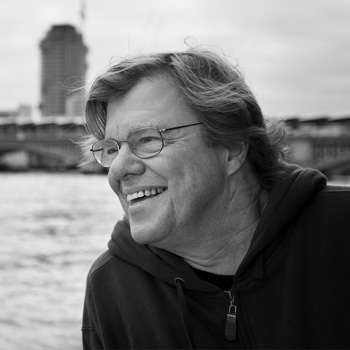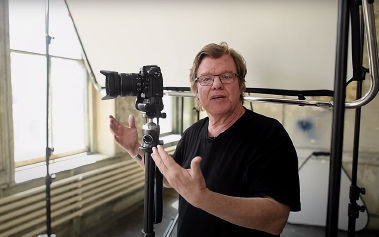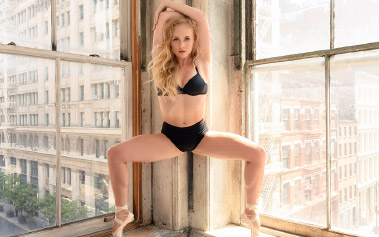DANCE PHOTOGRAPHY
JOE MCNALLY TIPS AND EQUIPMENT
" The lines of a dancer....the lines of a picture. All must be beautiful, and beautifully arranged, and cared for in the camera. Which of course means a stable camera support. Hence a powerfully solid tripod. It may seem inconsequential, or less than necessary, bringing a tripod to photograph a dancer, as a session such as this is de facto fluid. Your subject is moving, nimble, and ever changing. Why lock down the camera? "
Frame is important. Think of the frame you see through the lens and imagine it to be the stage upon which you will ask the dancer to perform. You create the space and maintain it, in all of its rigor and graphics, and the dancer, in this case, Natalie, a friend of our studio, becomes the fascinatingly beautiful, curved, piece of the puzzle.


Look at the window view. It's all lines and rectangles. She becomes the lovely counterpoint, graphically, to the rigidity of the scene. The tripod ensures you maintain the rigor of the frame, or the stage.
In this instance, in this loft, filled with lots of natural light, I used the Gitzo Systematic. We were in a setting where, as is often the case, the photographer remains all day, looking at changing light patterns and wringing out of the location all of its pictorial potential. The Gitzo tripod became "home base" for each of the ensuing setups. One of the first rules of thinking, for me, on location, is to establish what you want to say, and identify the gesture you are after, but then, of crucial importance, establish the frame. The scene. What you show the viewer in your picture, and how you arrange it, is highly influential in terms of the story your pictures are about to tell.
I also used a Systematic with a center riser on this day. The center riser gives you incremental, fine tune control over the height of the camera relative to the subject. It eliminates guesswork and approximation.
Dance Photography: Rules and Tips
Every bit of height and space counts when taking dance photography. Quick tip. When working with dancers or athletes, as I often have, over the years, I establish the frame, and then I allow another 25%. It's amazing what the athletic, finely tuned body is capable of! When I have constrained the space and framed a scene tightly, I have been surprised, and simply had to stand at camera while the dancer literally flew out of my frame. So now, I allow for extra room to accommodate the exuberance of the move.
On the street
Out on the street, anything goes, and the frame can be free and easy, and move with the rhythm of the unexpected. The camera is hand held, and you are moving where the light and the action direct you.
In the studio
But in the studio, in the frame, the lines have to be straight, and the scene has to be maintained. This is where Gitzo excels. When I use the Gitzo ball heads, and apply a slight bit of braking action, I find I can easily, smoothly make minute adjustments in my scene, again, with incremental control.
The dancer is beautiful, unpredictable and explosive. The Gitzo is the sturdy base for the action.
Behind the scene video
Check out a fun video we did with Natalie, our dancer subject.
NYC has always been a magnet for the best dancers in the world to comer and test the waters, up their game and go for it in the bright lights of the big city.































